With the Seasat archives decoded into range line format along with an auxiliary header file full of metadata, the next step is to focus the data into synthetic aperture radar (SAR) imagery. Focusing is the transformation of raw signal data into a spatial image. Unfortunately, pervasive bit errors, data drop outs, partial lines, discontinuities and many other irregularities were still present in the decoded data.
3.1 Important Metadata Fields
In order for the decoded SAR data to be focused properly, the satellite position at the time of data collection must be known. The position and velocity of the satellite are derived from the timestamp in each decoded data segment, making it imperative that the timestamps are correct in each of the decoded data frames.
Slant range is the line of sight distance from the satellite to the ground. This distance must be known for focusing reasons and for geolocation purposes. As the satellite distance from the ground changes during an orbit, the change is quantified using the delay-to-digitization field. During focusing, the slant range to the first pixel is calculated using these quantified values. More specifically, the slant range to the first pixel (srf) is determined using the delay to digitization (delay), the pulse repetition frequency (PRF) and the speed of light (c):

It turns out that the clock drift is also an important metadata field. Clock drift records the timing error of the spacecraft clock. Although it is not known how this field was originally created, upon adding this offset to the day of year and millisecond of day more accurate geolocations were obtained in the focused Seasat products.
Finally, although not vital to the processing of images, the station code provides information about the where the data was collected and may be useful for future analysis of the removal of systematic errors.
3.2 Bit Errors
It is assumed that the vast majority of the problems in the original data are due to bit errors resulting from the long dormancy of the raw data on magnetic tapes. The plots in section 2.1 showed typical examples of the extreme problems introduced by these errors, as do the following time plots.
| Bit Errors |
|---|
| It is assumed that the vast majority of the problems in the original data are due to bit errors resulting from the long dormancy of the raw data on magnetic tapes. The plots in section 2.1 showed typical examples of the extreme problems introduced by these errors, as do the following time plots. |
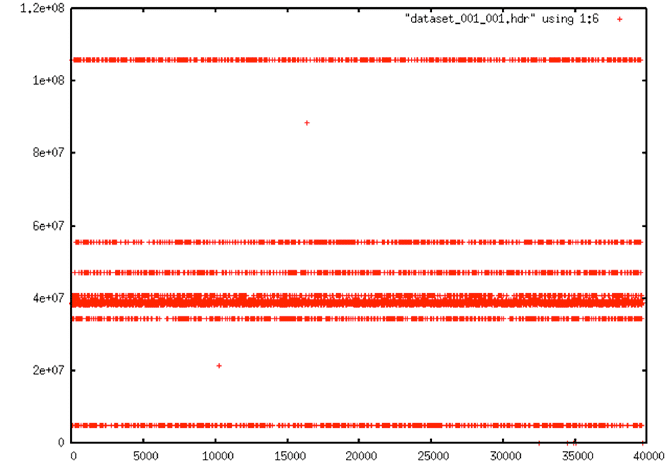 |
| Time Plot: Very regular errors occur in much of the data, almost certainly some of which are due strictly to bit errors. Note that this plot should show a slope, but the many errors make it look flat instead. |
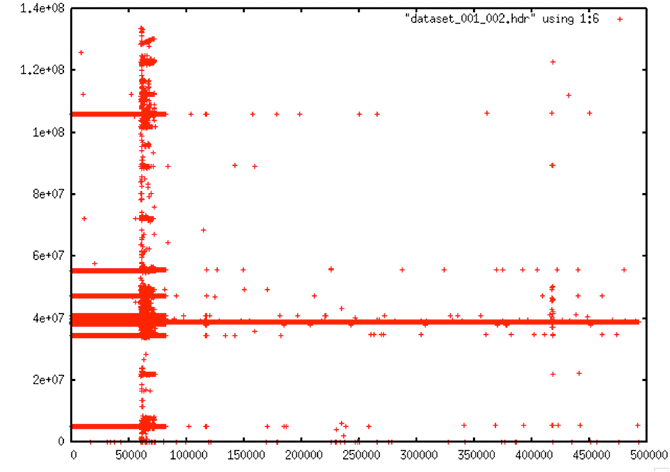 |
| Time Plot: This plot shows a typical occurrence in the Seasat raw data: Some areas of the data are completely fraught with random errors; other areas are fairly “calm” in comparison. |
3.3 Systematic Errors in Timing
Beyond the bit errors, other, more systematic errors affect the Seasat timing fields. These include box patterns, stair steps and data dropouts.
To top off the problems with the time fields, discontinuities occur on a regular basis in these files. Some files have none; some have hundreds. Some discontinuities are small — only a few lines. Other discontinuities are very large — hundreds to thousands of lines. Focusing these data required identifying and dealing with discontinuities.
| Systematic Errors in Timing |
|---|
| Box errors |
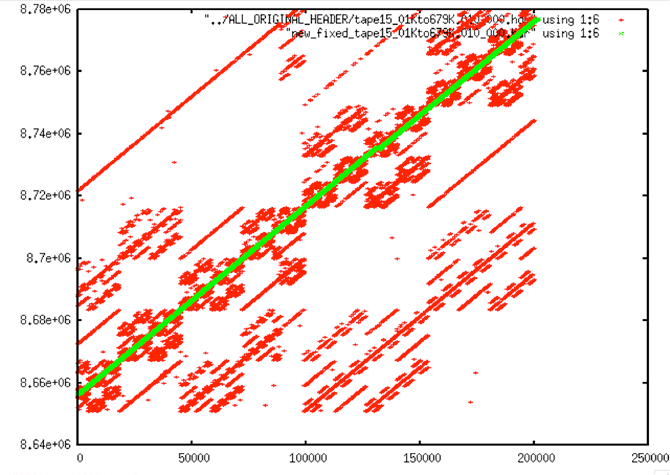 |
| Stair Steps |
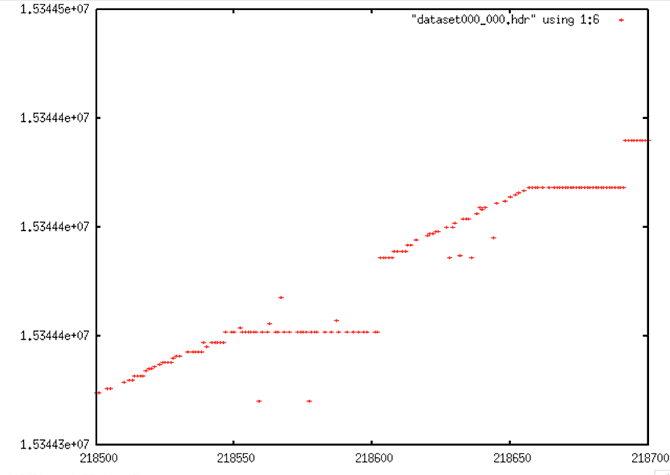 |
| Data Dropouts |
 |
| Forward Time Discontinuity |
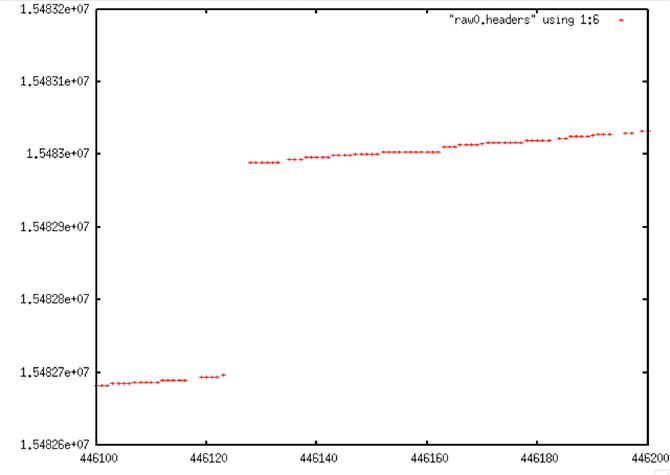 |
| Backward Time Discontinuity |
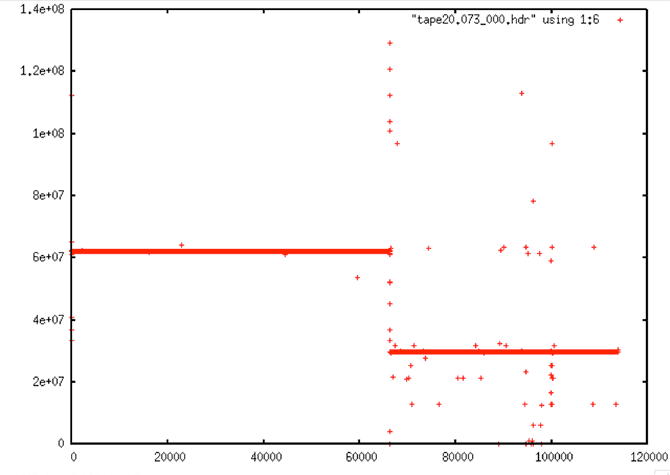 |
| Double Discontinuity |
 |
| Time Discontinuity |
 |
Aside: Initial Data Quality Assessment
Of the 1,470 original decoded data swaths
- Datasets with Time Gaps (>5 msec): 728
- Largest Time Gap: 54260282
- Largest Number of Gaps in a Single File:1,820
- Number of files with stair steps: 295
- Largest percentage of valid repeated times: 63%
- Number of files with more than one partial line: 1,170
- Largest percentage of partial lines: 42%
- Number of files with bad frame numbers: 1,470
- Largest percentage of bad frame numbers: 17%




